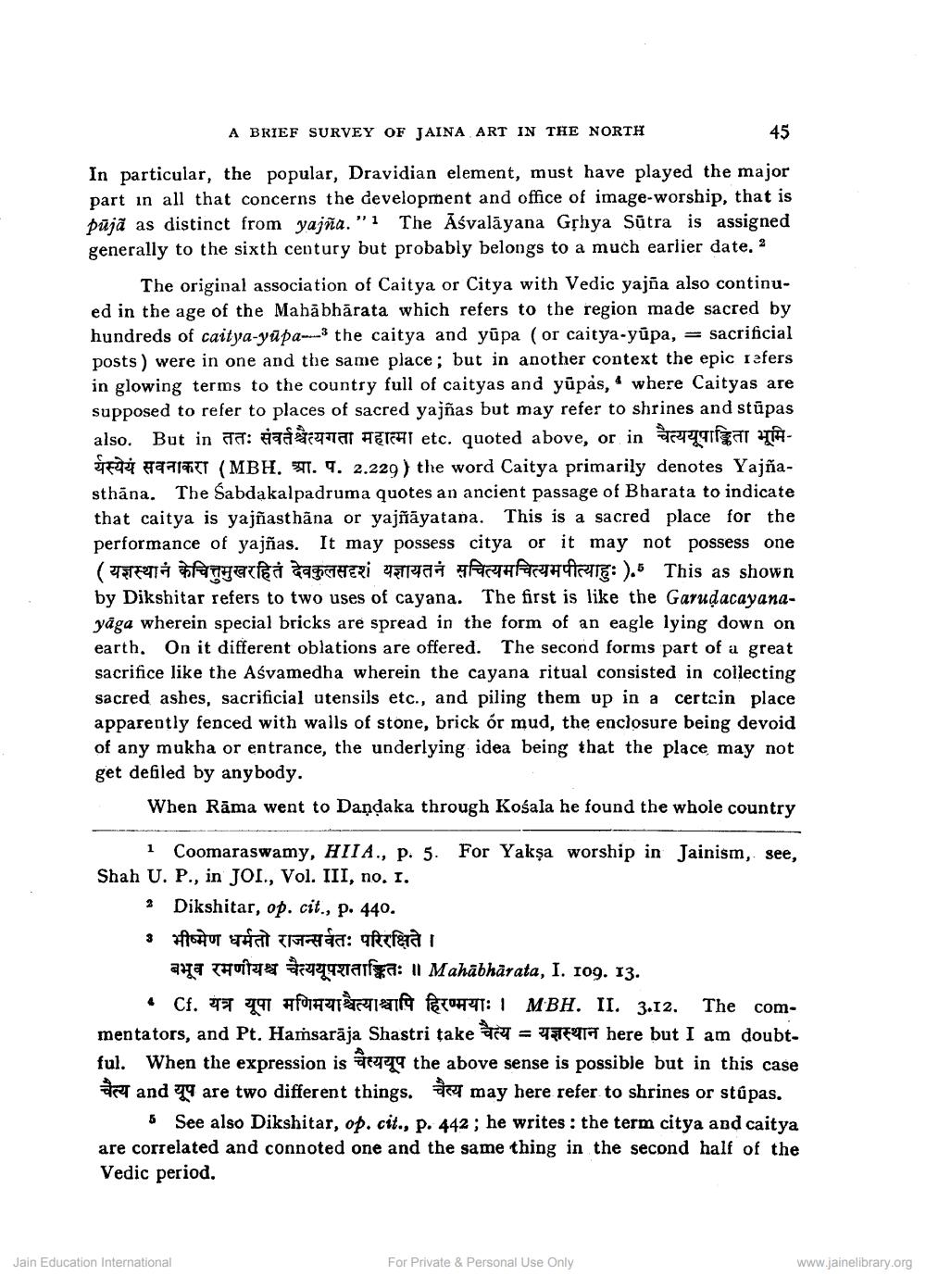________________
A BRIEF SURVEY OF JAINA ART IN THE NORTH
45
In particular, the popular, Dravidian element, must have played the major part in all that concerns the development and office of image-worship, that is pujā as distinct from yajña."i The Āśvalāyana Gșhya Sūtra is assigned generally to the sixth century but probably belongs to a much earlier date. 2
The original association of Caitya or Citya with Vedic yajña also continued in the age of the Mahābhārata which refers to the region made sacred by hundreds of caitya-yūpa-. the caitya and yūpa (or caitya-yúpa, = sacrificial posts) were in one and the same place; but in another context the epic refers in glowing terms to the country full of caityas and yūpas," where Caityas are supposed to refer to places of sacred yajñas but may refer to shrines and stūpas also. But in ततः संवर्तश्चैत्यगता महात्मा etc. quoted above, or in चैत्ययूपाङ्किता भूमि
9717TT (MBH. 9. 9. 2.229 ) the word Caitya primarily denotes Yajñasthāna. The Sabdakalpadruma quotes an ancient passage of Bharata to indicate that caitya is yajñasthāna or yajñāyatana. This is a sacred place for the performance of yajñas. It may possess citya or it may not possess one (77 fatuatia TERI Traa ATHARTHRIE: ).5 This as shown by Dikshitar refers to two uses of cayana. The first is like the Garudacayanayāga wherein special bricks are spread in the form of an eagle lying down on earth. On it different oblations are offered. The second forms part of a great sacrifice like the Aśvamedha wherein the cayana ritual consisted in collecting sacred ashes, sacrificial utensils etc., and piling them up in a certain place apparently fenced with walls of stone, brick or mud, the enclosure being devoid of any mukha or entrance, the underlying idea being that the place may not get defiled by any body.
When Rāma went to Dandaka through Kośala he found the whole country
1 Coomaraswamy, HIIA., p. 5. For Yaksa worship in Jainism, see, Shah U. P., in JOI., Vol. III, no. 1.
2 Dikshitar, op. cit., p. 440. ३ भीष्मेण धर्मतो राजन्सर्वतः परिरक्षिते ।
alla Thuitze azetarja: 11 Mahābhārata, I. 109. 13.
• Cf. TT 491 AASTAT Recone: I MBH. II. 3.12. The commentators, and Pt. Hamsarāja Shastri take = 474TT here but I am doubt. ful. When the expression is geen the above sense is possible but in this case #and 14 are two different things. they may here refer to shrines or stūpas.
5 See also Dikshitar, op. cit., p. 442; he writes: the term citya and caitya are correlated and connoted one and the same thing in the second half of the Vedic period.
Jain Education International
For Private & Personal Use Only
www.jainelibrary.org




